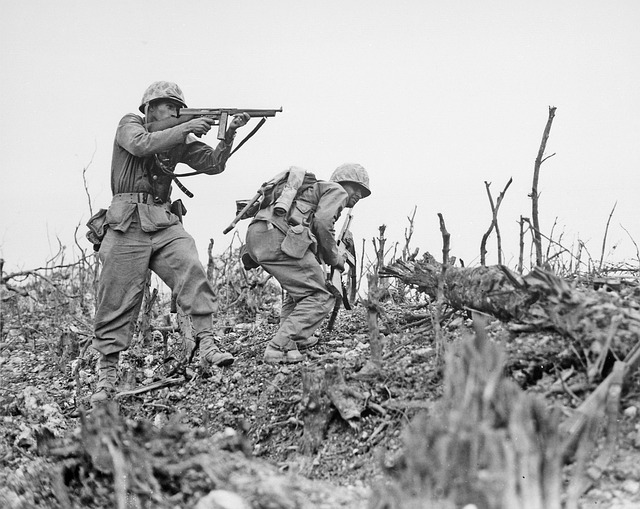Burma looked an improbable location for battle in the months before hostilities in the Pacific began. According to the British, the terrain was too difficult and jungle-covered for soldiers to advance through. Burma was unprepared for major combat as it had just recently gained independence from India in 1937 and was only beginning to field an army of its own. The Burmese army was given British General Staff command as conflict approached, although it was still financed and supplied by Burma. The Indian army, tasked with safeguarding the nation, assumed complete command of the Burmese forces when the Japanese eventually started the war in early December 1941.
Japan, who had been given command of Indochina when the war first started, soon took over Siam (Thailand) after seizing Bangkok on December 8th. Because Japanese forces were moving southward down the Malay Peninsula toward Singapore, Burma appeared to be safe. Even after realizing the Japanese were approaching, the British were unable or unwilling to commit significant forces to safeguard Burma, which they saw as a massive buffer zone to protect India. The forces guarding Burma were once more moved to the American-British-Dutch-Australian (ABDA) command, stationed in Java, and given the responsibility of guarding all of Southeast Asia and Indonesia, which only served to make matters worse. Planning became nearly difficult due to the frequent change of command authority.
From two locations, the Japanese attacked Burma. A division crossed the border on January 15, 1942, traveling north from Victoria Point, Burma's southernmost point. Five days later, another division launched an offensive from Siam in the direction of Moulmein, cutting off the southern peninsula of Burma. When trying to maintain a cordon defense over the entire border, the British-Burmese-Indian forces were overextended. One Burmese brigade and one Indian brigade, totaling 8,000–10,000 men, were tasked with guarding 500–800 kilometers of the frontier at the beginning of the invasion.
The Japanese air force pounded Rangoon, the capital city, which gradually ceased harbor operations. The American Volunteer Group (AVG), the "Flying Tigers," on loan from the Chinese, swiftly augmented the British air defense's 16 outdated fighter aircraft. The aviation raids were harassed by the AVG, but they were unavoidable. Fortunately for the ground defenders, the Japanese close air support was not very effective.
The Allied forces, including the Chinese, were forced to retire when the Japanese launched an attack up three rivers in the north: the Irrawaddy, the Sittang, and the Salween. Millions of gallons of crude oil kept in tanks at Yenangyaung had to be destroyed by the retreating Allies by mid-April. The British were unable to bring in many reinforcement supplies because to their limited air power, and even the addition of more Chinese troops in April could not stop the Japanese tide. Lashio was taken prisoner by the Japanese on April 29. Lashio served as the gateway to the Burma Road, the only route that could transport supplies overland to China. The fall of Lashio signaled the end of direct overland aid to China until January 1945.
The British and Americans didn't feel ready to return to Burma until 1944. They intended to attack from three different directions: the north with a joint Sino-American force, the northeast with a Chinese force provided by Chiang Kai-shek, and the west with the British 14th Army. The Japanese attack heading for the border delayed the invasion. The Japanese planned to attack the Ledo train terminal, halting efforts to resume land communication with China. After experiencing some initial success, they got stuck in the towns of Imphal and Kohima, where the 14th Army led by General William Slim withstood a siege and drove the Japanese back in the summer of 1944.
Although the British believed that Chiang Kai-shek was more concerned with accumulating armaments to fight the Communist Chinese than with fighting the Japanese, the United States was convinced that China could encircle large numbers of Japanese troops. The campaign demonstrated the efficacy of long-range strike units like Wingate's Chindits as well as the capability of air forces to support such operations with supplies and medical evacuation. The Allies misjudged Japan's intentions, despite the need to deny the Japanese access to the nation's natural riches. They did not really threaten India's borders until 1944, and by that time Japan was unable to resupply, so even if the British and Commonwealth soldiers had not resisted, no major invasion of India could have occurred.

References:
Bidwell, Shelford, The Chindit War (New
York: Macmillan, 1980); Romanus, Charles, Time
Runs Out in CBI (Washington, DC: Office of the
Chief of Military History, 1958); Slim, William,
Defeat into Victory (New York: D. McKay, 1961).
Posted using Proof of Brain





